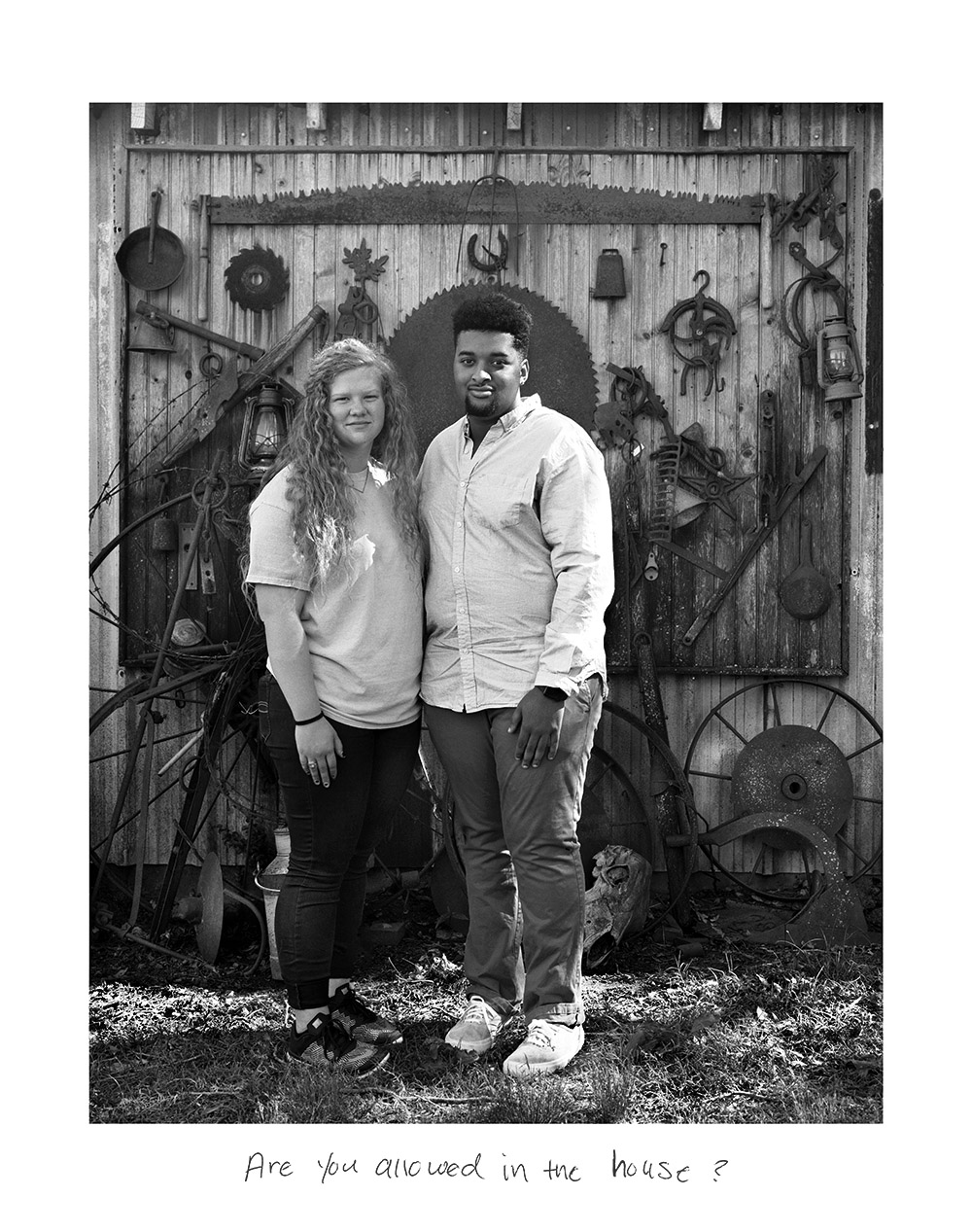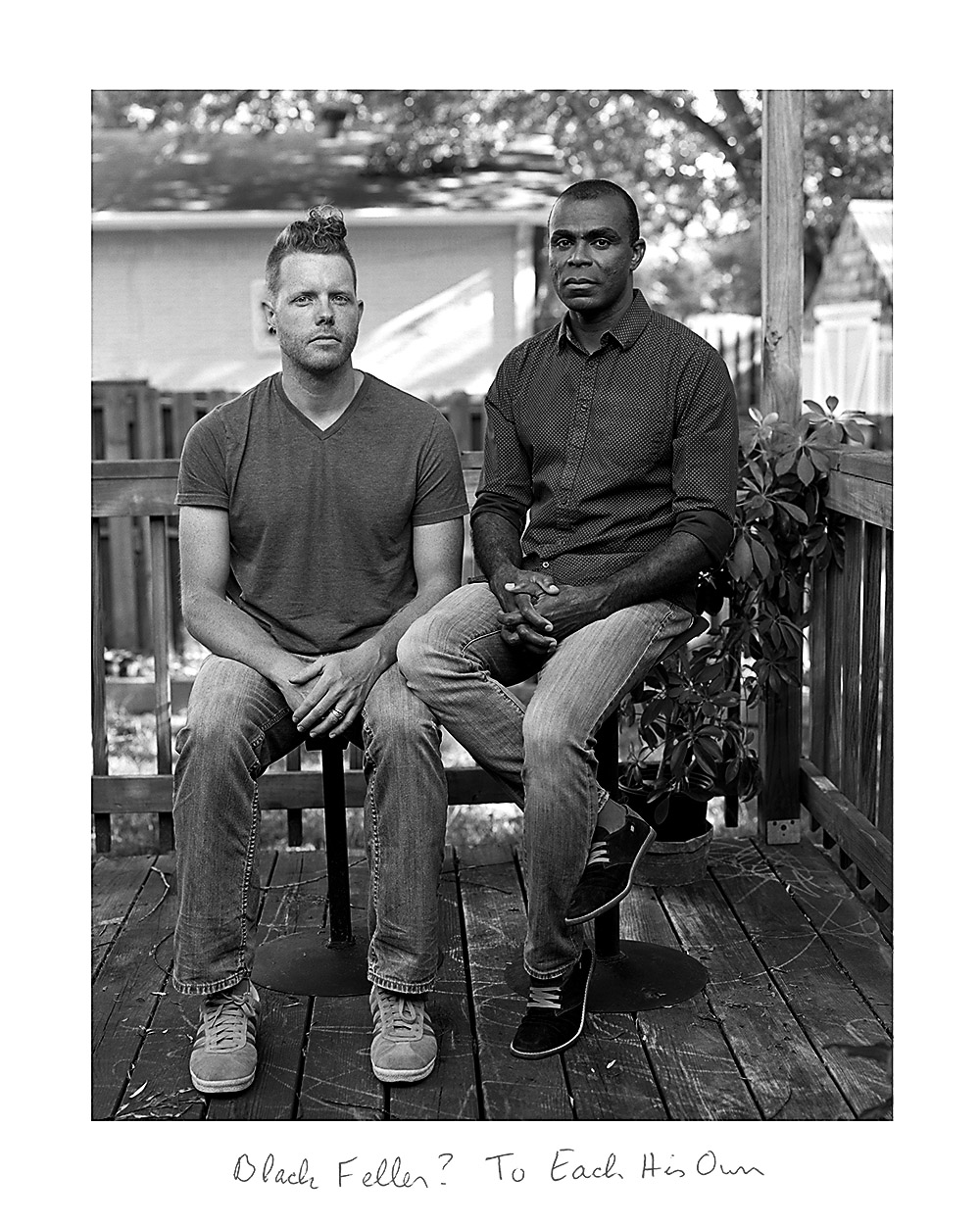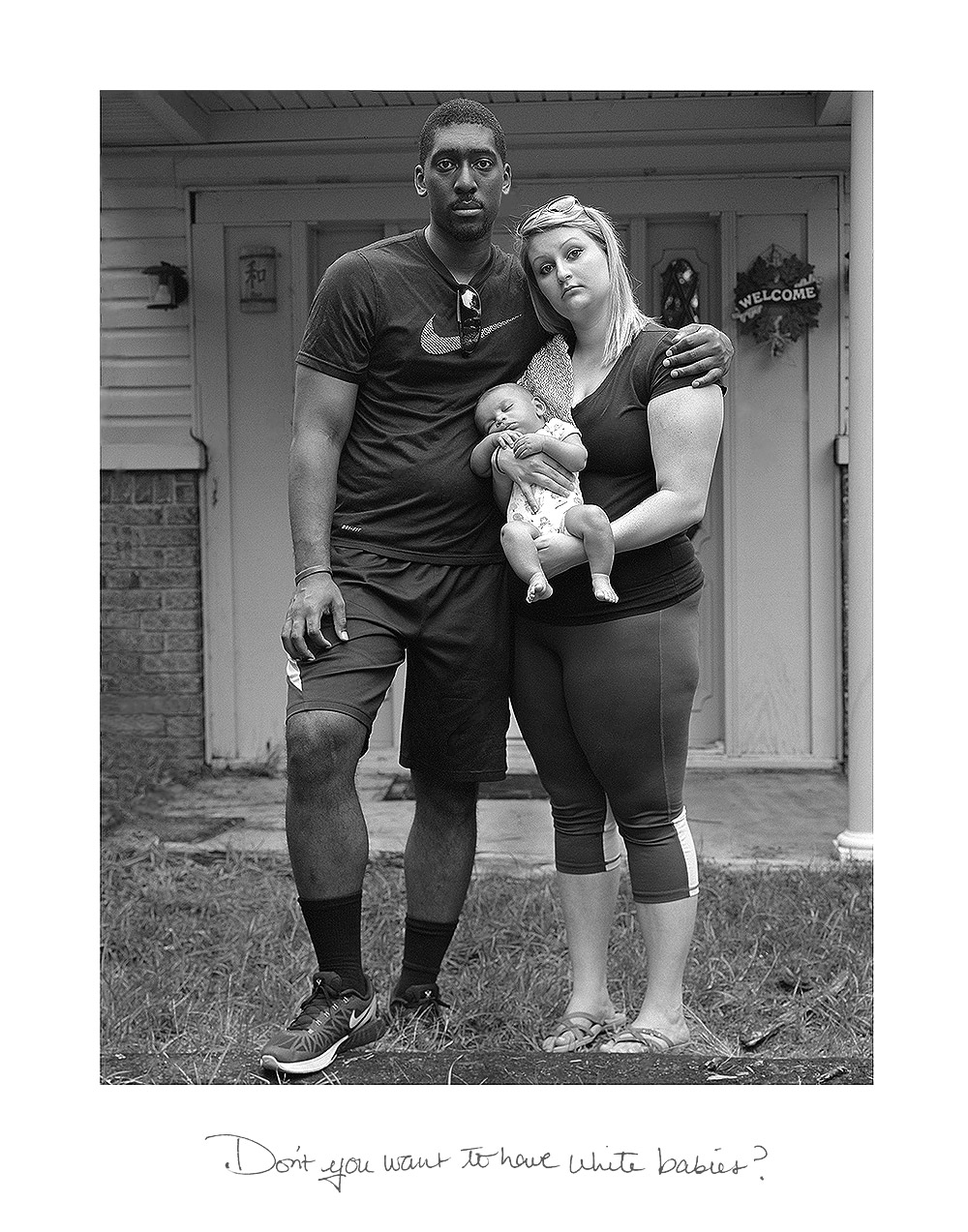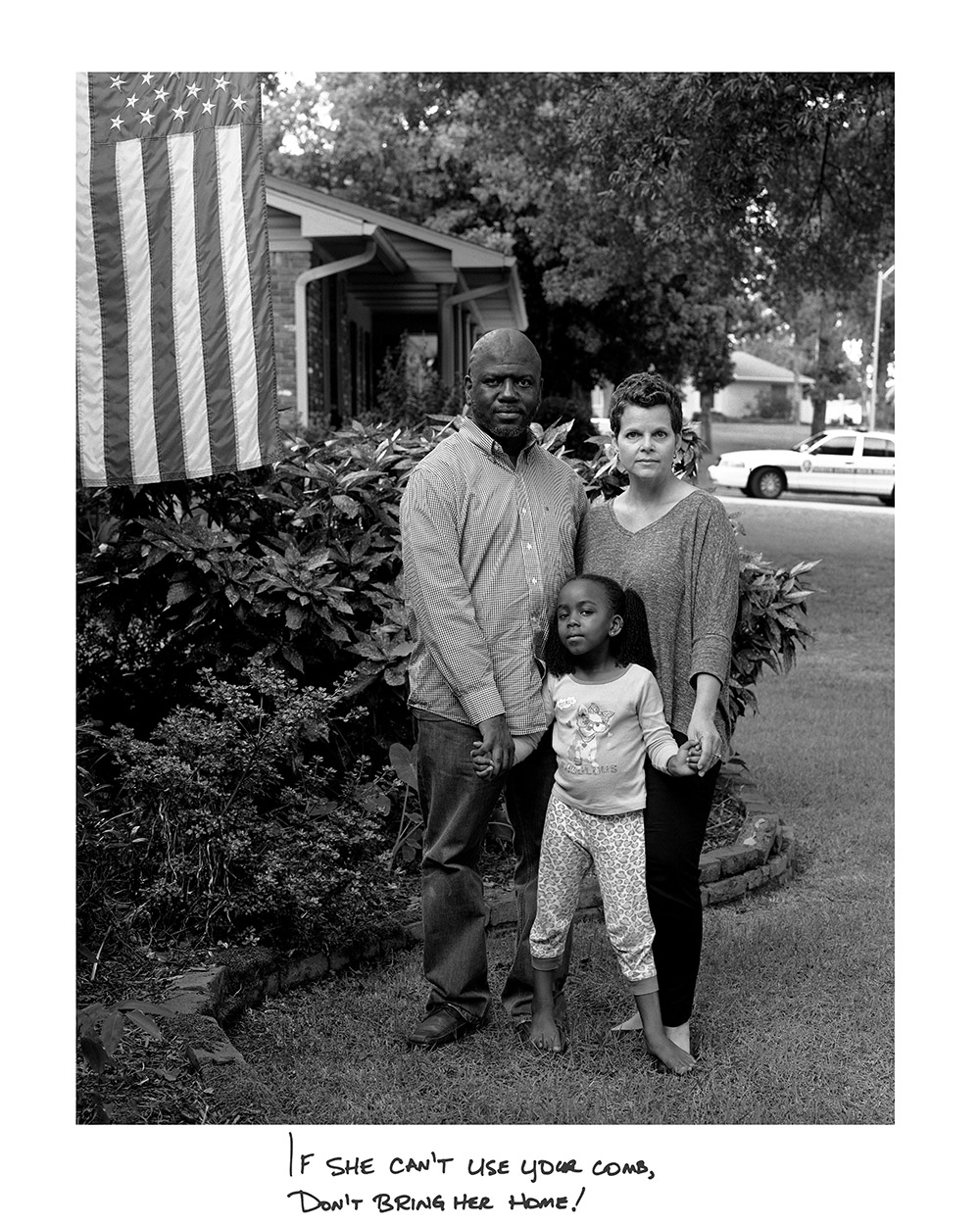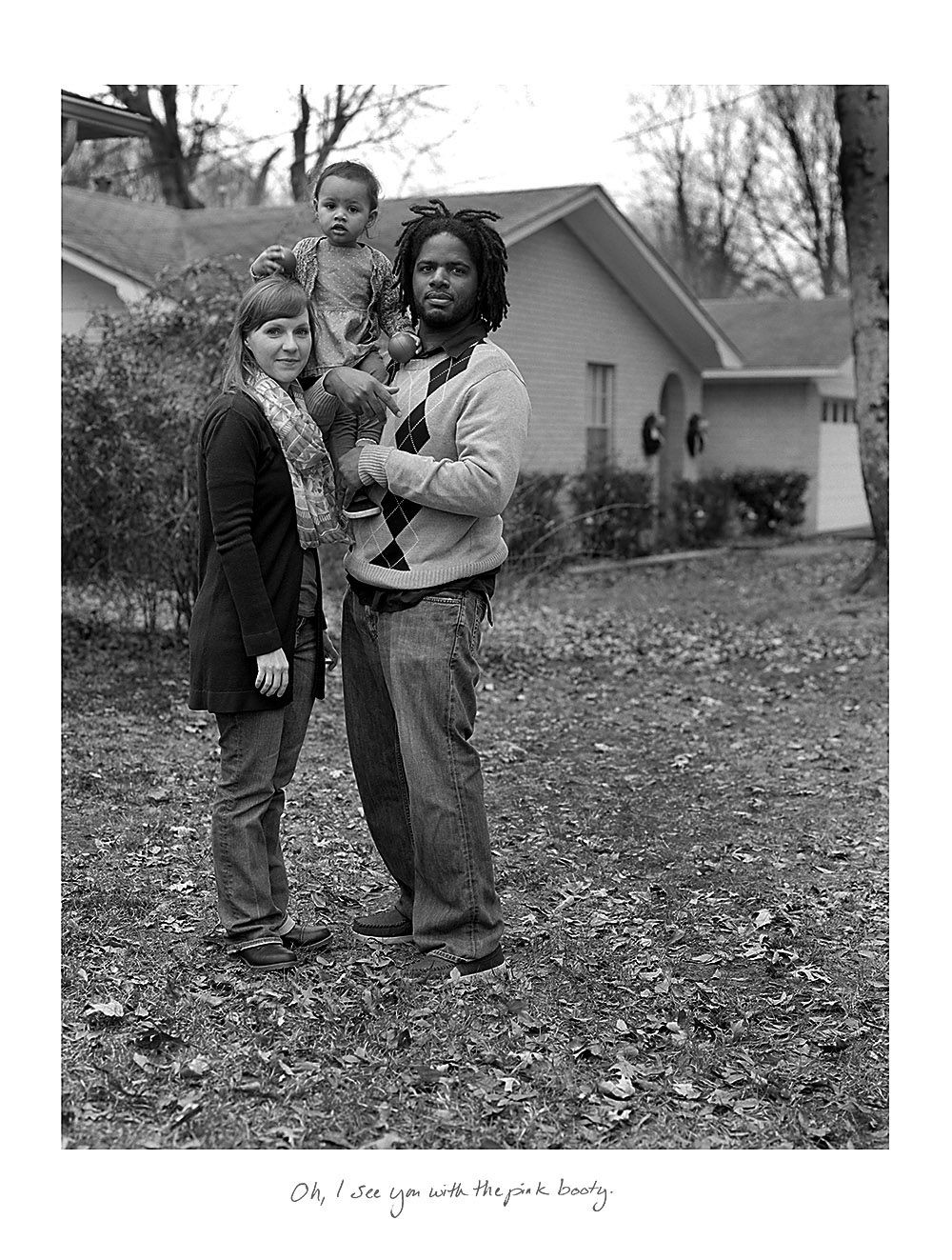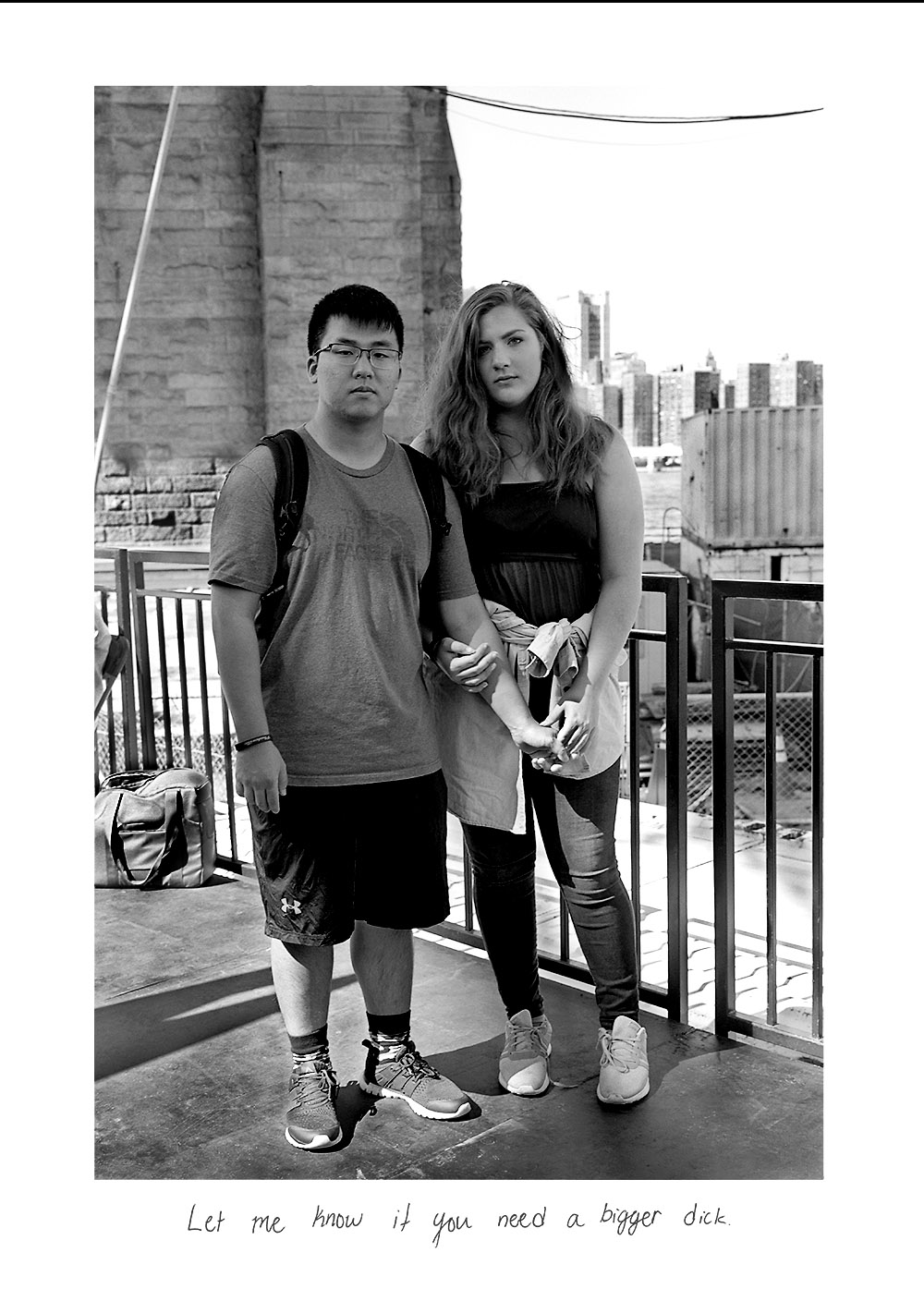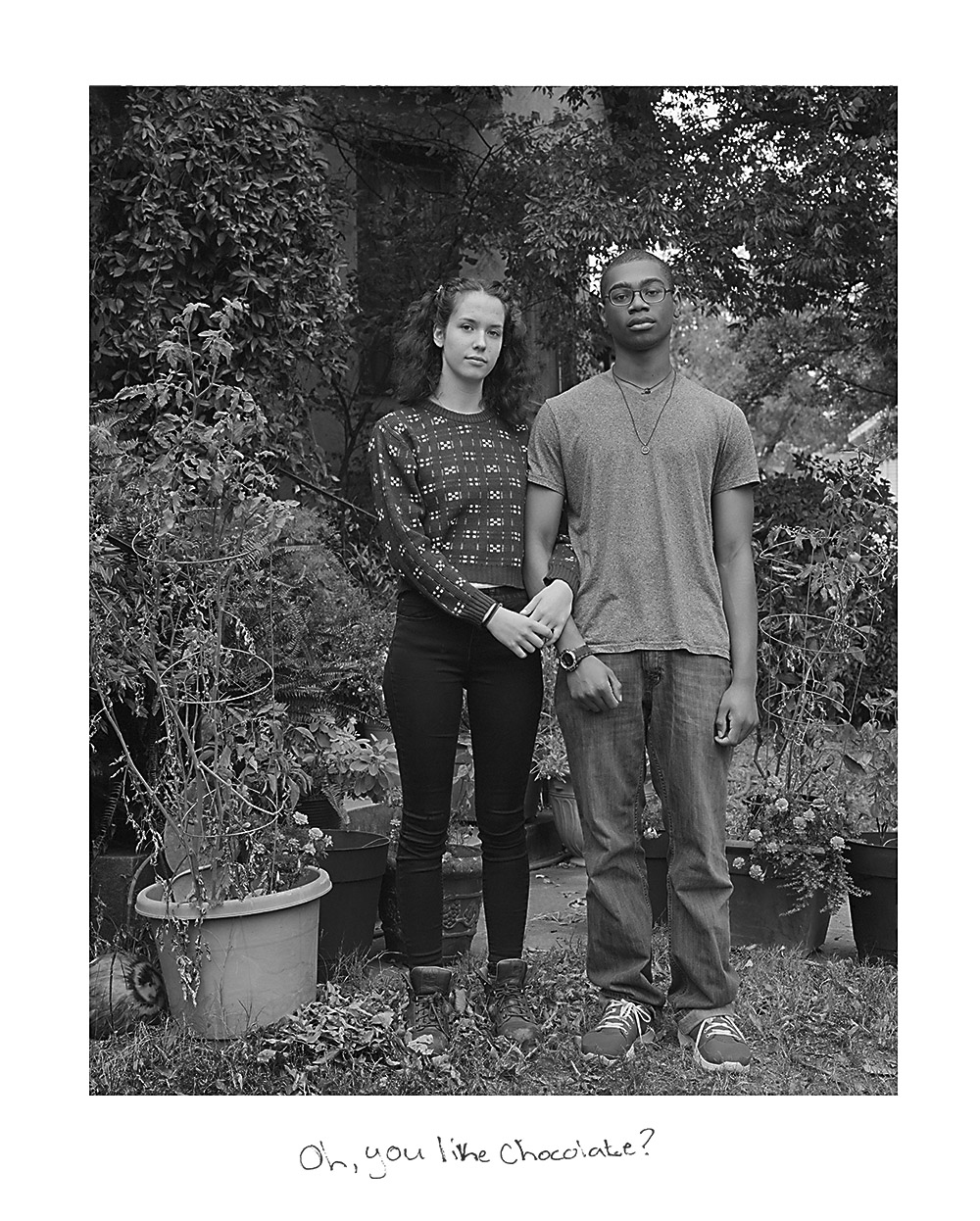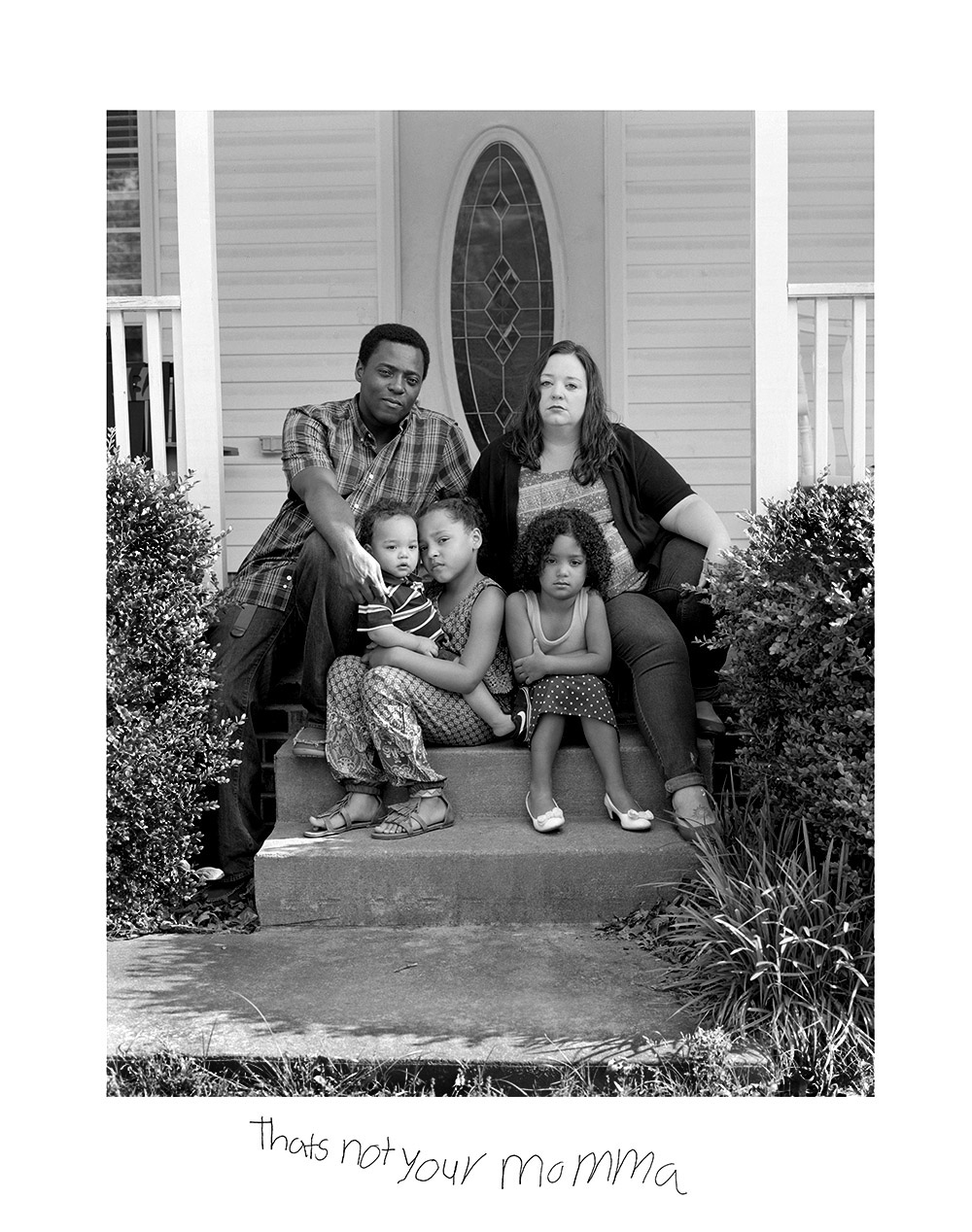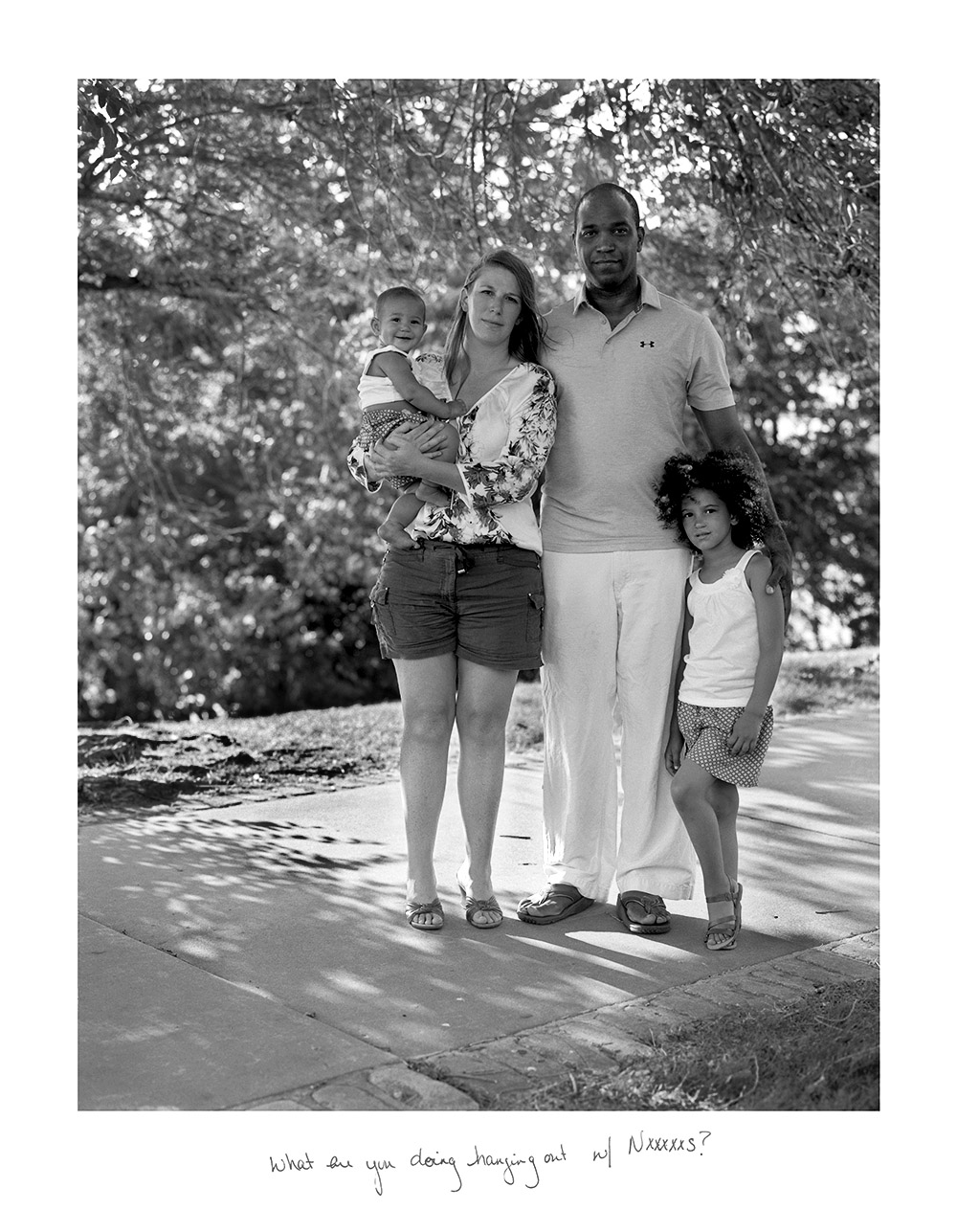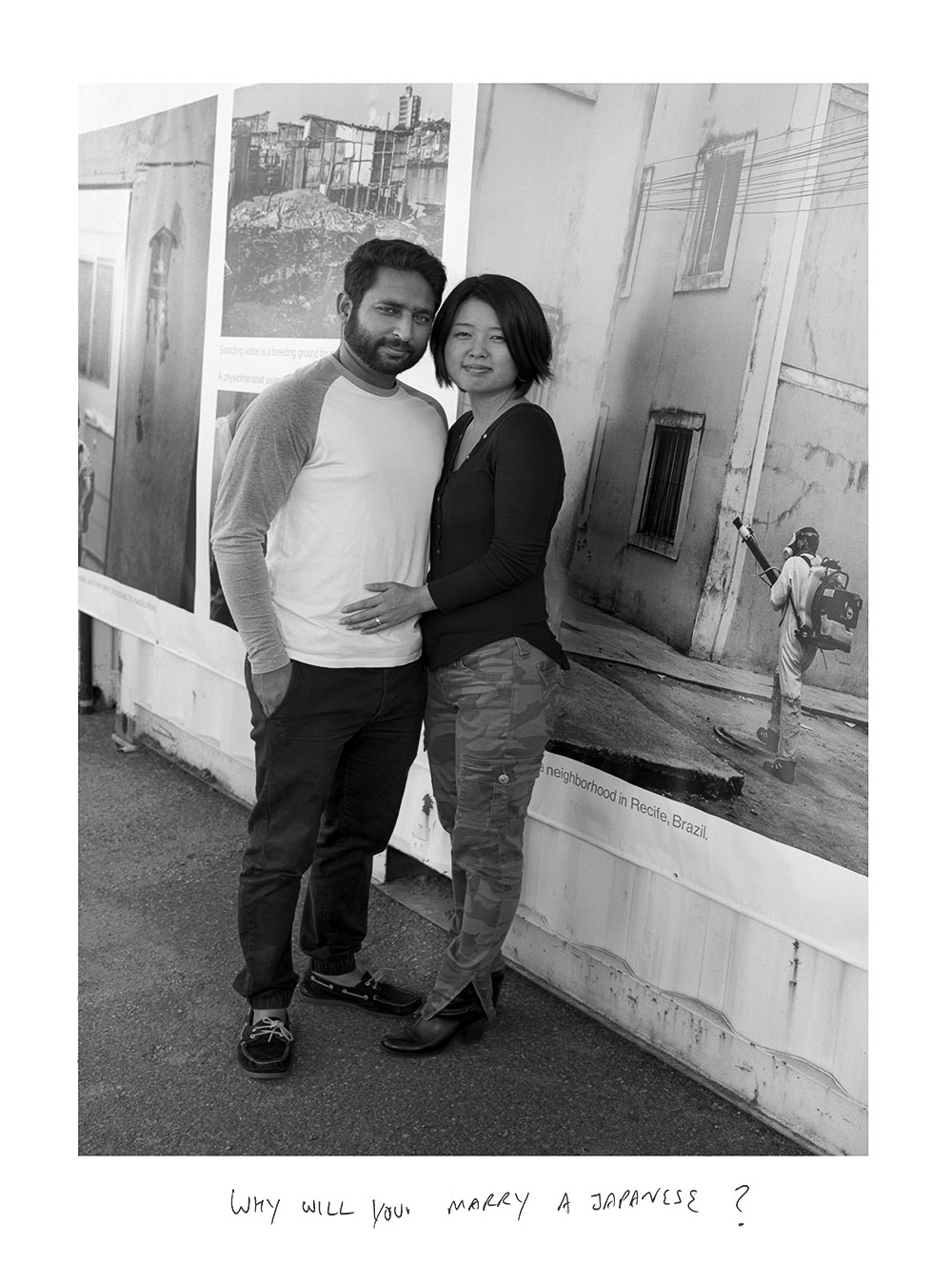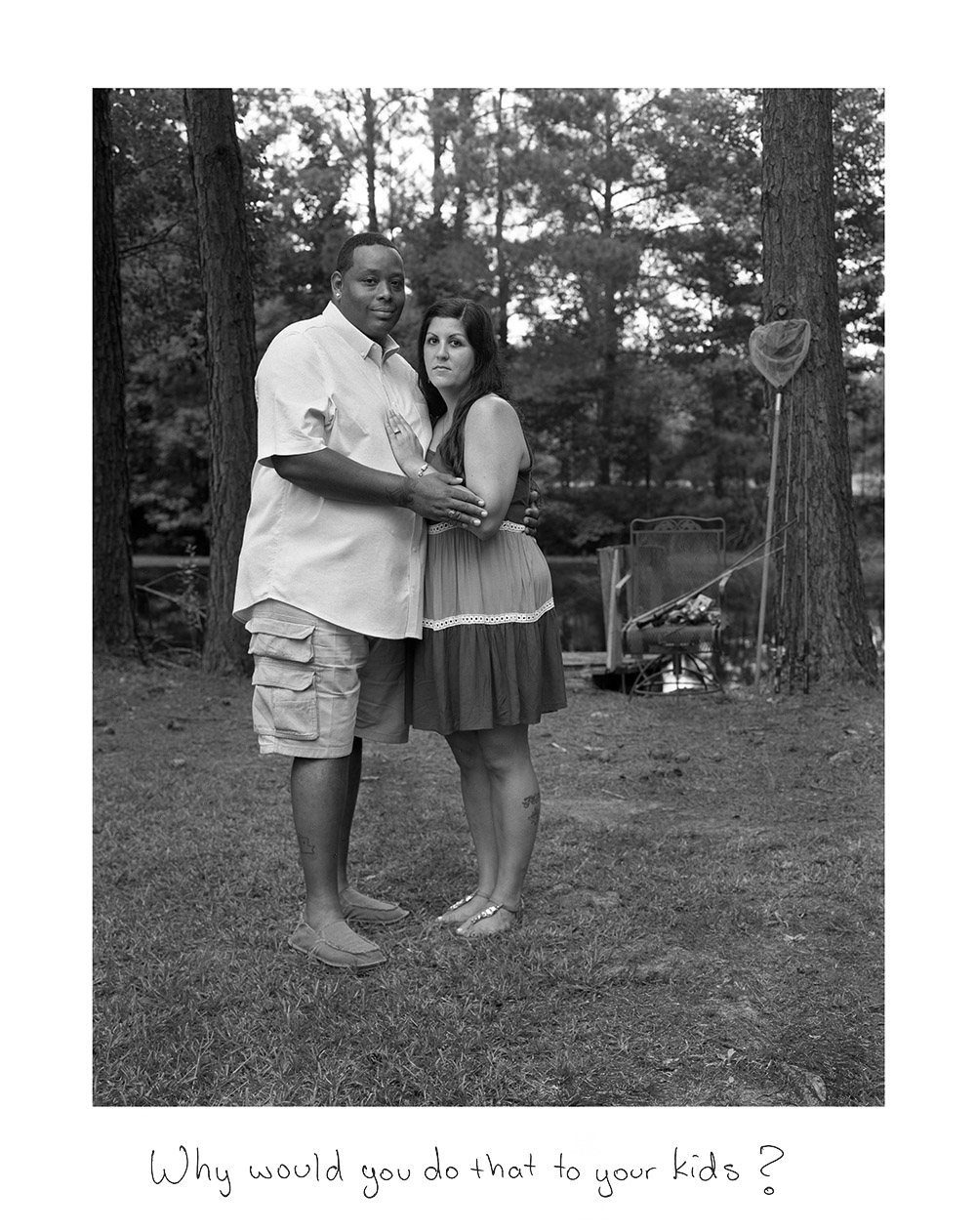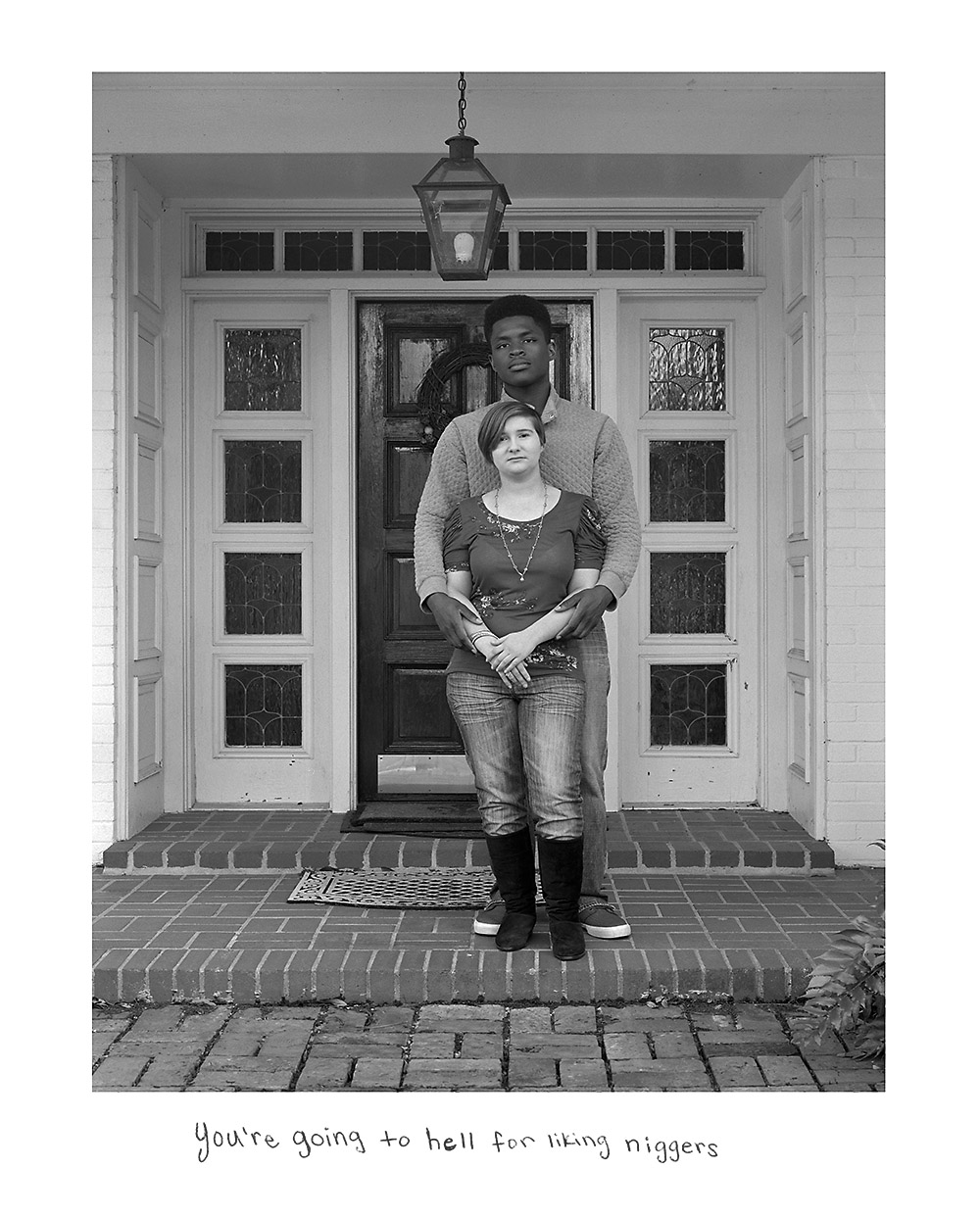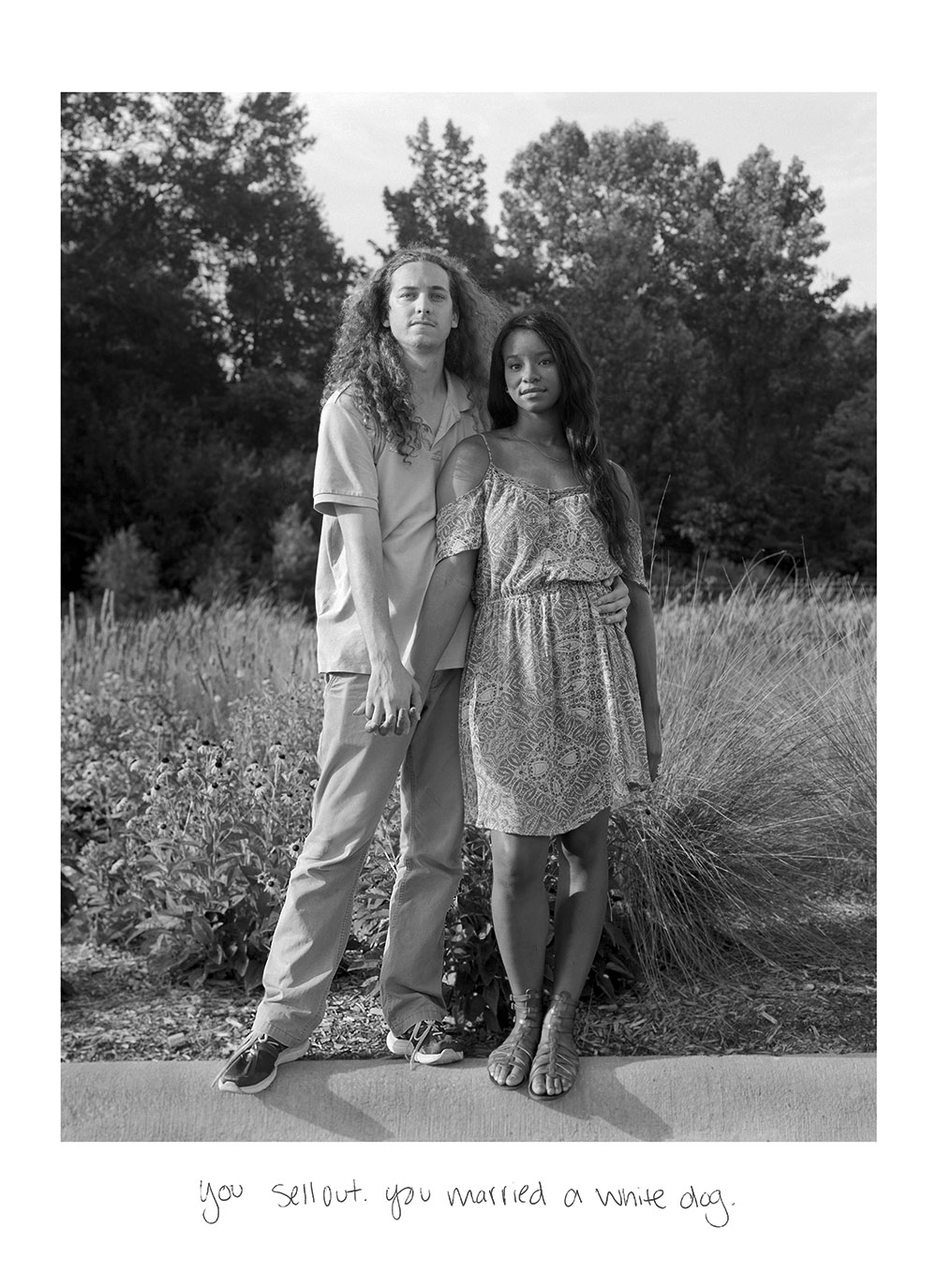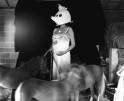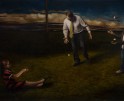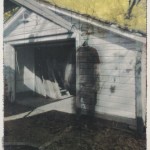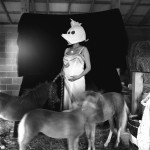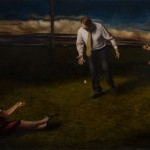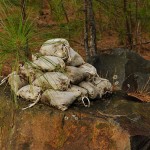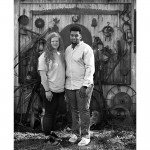Donna Pinckley: The States Project: Arkansas
I am so thrilled to have Donna Pinckley as the Arkansas States Project Editor and look forward to learning more about Arkansas photographers this week . I first got to know Donna through her poignant portrait work and was immediately drawn to her portraits of children in her series, Southern Depictions (1992-2015) . I was fortunate to see the photographs at PhotoNOLA and later feature it on Lenscratch. Two years ago, I joined a group of photographers for a photo foray to a cotton farm in Arkansas and Donna wonderfully drove several hours to join us, where we geeked out discussing film cameras. Donna exhibits a gracious Southern sensibility, in her life and in her work, but she also has a way of seeing the world that is truthful and compassionate.
Her new series, Sticks and Stones, is a timely project reflecting the conflicted and contentious reactions that Americans have towards race. But Donna focuses on the most important quality of her subject’s relationships: love. “I want the viewer to look at the portrait first and then look down and see the writing,” she said. “I want them to see how beautiful and how much they love each other first.” The portraits are a wonderful testament to the power of a world that doesn’t see color before seeing the person. An interview with Donna follows.
Donna Pinckley was born in Louisiana and has lived in the South all her life. Her work has dealt with the human condition and the intimate relationship between the subject and her audience and has evolved into her current body of work that deals with racism. She received a Bachelor of Fine Arts in photography from Louisiana Tech University and a Master of Fine Arts in photography from University of Texas at Austin.
She has received Visual Artist Fellowships from the Mid-America Arts Alliance/NEA and the Arkansas Arts Council. Her work has been exhibited nationally and internationally in over 200 solo/juried shows including this past year in The Royal Photographic Society International Photography Exhibition 160 in Bath, United Kingdom. She is also included in several public collections, such as the Ogden Museum of Southern Art in New Orleans, Louisiana, the University of VeraCruz at Xalapa, VeraCruz, Mexico, and the Photographic Collection at the Harry Ransom Center, University of Texas at Austin.
In 2017, she was awarded an Honorarium at the Houston Center for Photography’s Members Show. In 2016, she was the first recipient of the Josephine Herrick Photography Award for combining photography with social justice and was selected for PhotoLucida’s Critical Mass Top 50 exhibition. She has been published in GEO Germany, The Photo Review magazine, Black and White (UK), Photography Quarterly and the online photography publications, www.slate.com and www.theguardian.com and www.huffingtonpost.com. She is currently Professor of Art at the University of Central Arkansas in Conway, Arkansas.
Sticks and Stones
For over thirty years I have photographed a particular social and cultural group of children. Before my eyes and in front of my camera they have passed through adolescence into young adulthood. My goal throughout has been to portray not how the world sees them, but how they see themselves.
I began by working with one child at a time, but as my subjects have grown up and matured, people and relationships have replaced toys and skateboards, both in their lives and in my photographs—siblings and friends, casual acquaintances, and mostly recently, romantic partners.
The Sticks and Stones photography series began with an image of one of my frequent subjects and her African-American boyfriend. Her mother and I were catching up when she told me of the cruel taunts hurled at her daughter for dating a boy of another race. As she was speaking, I was reminded of another couple many years ago, who had been the object of similar racial slurs. What struck me was the resilience of both couples in the face of derision, their refusal to let others define them.
Three years ago, I began photographing interracial couples of all ages, aiming as always to capture how they see themselves, the world of love and trust they have created despite adversity. In their own handwriting, I added the negative comments they have been subjected to at the bottom of the images as a reminder of how part of society sees them. – Donna Pinckley
“Sticks and stones may break my bones, but words can never hurt me” old English nursery rhyme
Tell us about your growing up and what brought you to photography?
I have always lived in the South and grew up in a small town of Alexandria, Louisiana. with one sister and two brothers. My parents divorced when I was about eight and my mom had a friend who was always taking photographs. I was very curious which, led up to one of my fellow classmates in high school who had a camera and he was photographing with black and white film. I was immediately intrigued with the photographic process, so much so, that I went to the bank and took out a loan to buy a Fujica ST605: my first camera. Not long after that I learned how to process black and white film and haven’t stopped since.
After finishing high school, I studied photography and received a Bachelor of Fine Arts in Photography from Louisiana Tech University. With only two photography professors, I was able to take a variety of other creative classes that included independent study, portraiture, studio lighting, and product photography. This block of time gave me the opportunity to discover that portraiture was the area I wanted to pursue. By my senior year, my priority and passion were focused on photographing people in their own settings.
How long have you been living in Arkansas? How does this state shape your photography?
I came to Little Rock, Arkansas in August 1991 for a sabbatical replacement. My former professor, Gary Cawood at Louisiana Tech moved on to teach at the University of Arkansas at Little Rock. The timing was perfect since I just graduated with a Master of Fine Arts in Photography from the University of Texas at Austin. After living and working in Little Rock for a long time, I was lucky to get a job in teaching at the University of Central Arkansas in Conway, Arkansas. Talk about being at the right place at the right time! The icing on the cake was that I didn’t have to leave Little Rock.
Little Rock is reminiscent of where I grew up in Louisiana, just bigger, so I had no problem photographing here. I wanted to photograph people and not be too cold, and most of the year I’m able to do that.
Is there a photography community in your state?
Yes, but very sparse, unfortunately.
How did you select the photographers for this week?
Since I’m in academia, I decided to highlight the photographers that teach. When I’m in my classroom, I tell my students that they not only learn from me but I learn from them. So, the photographers I chose fit into this category.
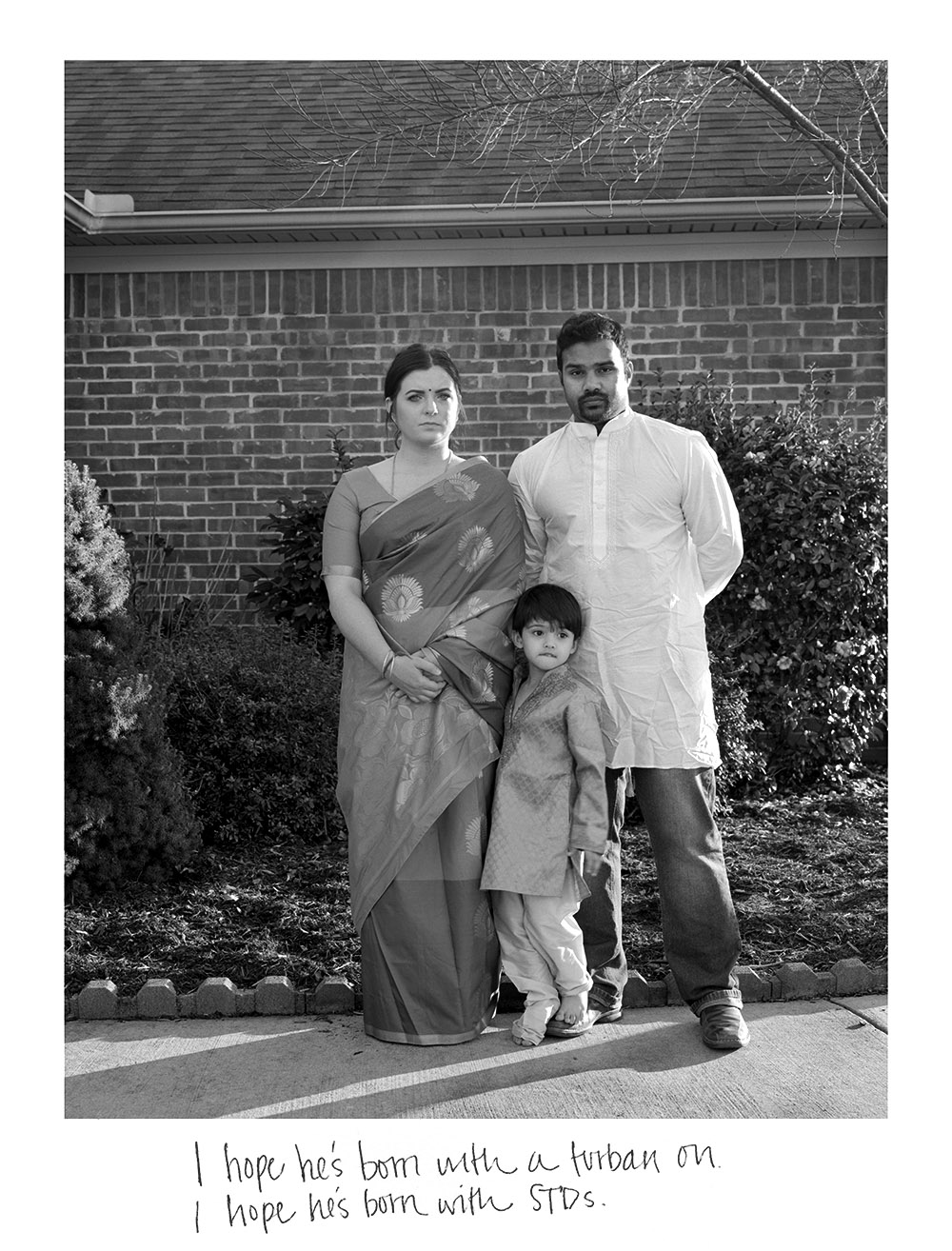
©Donna Pinckley, I hope he’s born with a turban on; I hpe he’s born with STDs.
I have been a longtime fan of your work. Why are you drawn to taking portraits?
Thank you Aline! I appreciate that. I have always been a quiet person but I also think I’m an observer. I love talking and getting to know someone and to take that further, I strive to have a psychological connection. What I mean by that is I’m not only looking at the people I’m photographing but how there looking back at me. That collaborative photograph.
What was the genesis of Sticks and Stones?
Sticks and Stones started in May 2014 and I wasn’t aware that this concept was cultivating in my subconscious, it seemed to just evolve from my previous projects that allowed for an easy transition. The series began with an image of one of my frequent subjects and her African-American boyfriend. Her mother and I were catching up when she told me of the cruel taunts hurled at her daughter for dating a boy of another race. As she was speaking, I was reminded of another couple many years ago, who had been the object of similar racial slurs. What struck me was the resilience of both couples in the face of derision, their refusal to let others define them. I began photographing interracial couples and bi-racial families, aiming as always to capture how they see themselves, the world of love and trust they have created despite adversity. In their own handwriting, I added the negative comments they have been subjected to at the bottom of the images as a reminder of how part of society sees them.
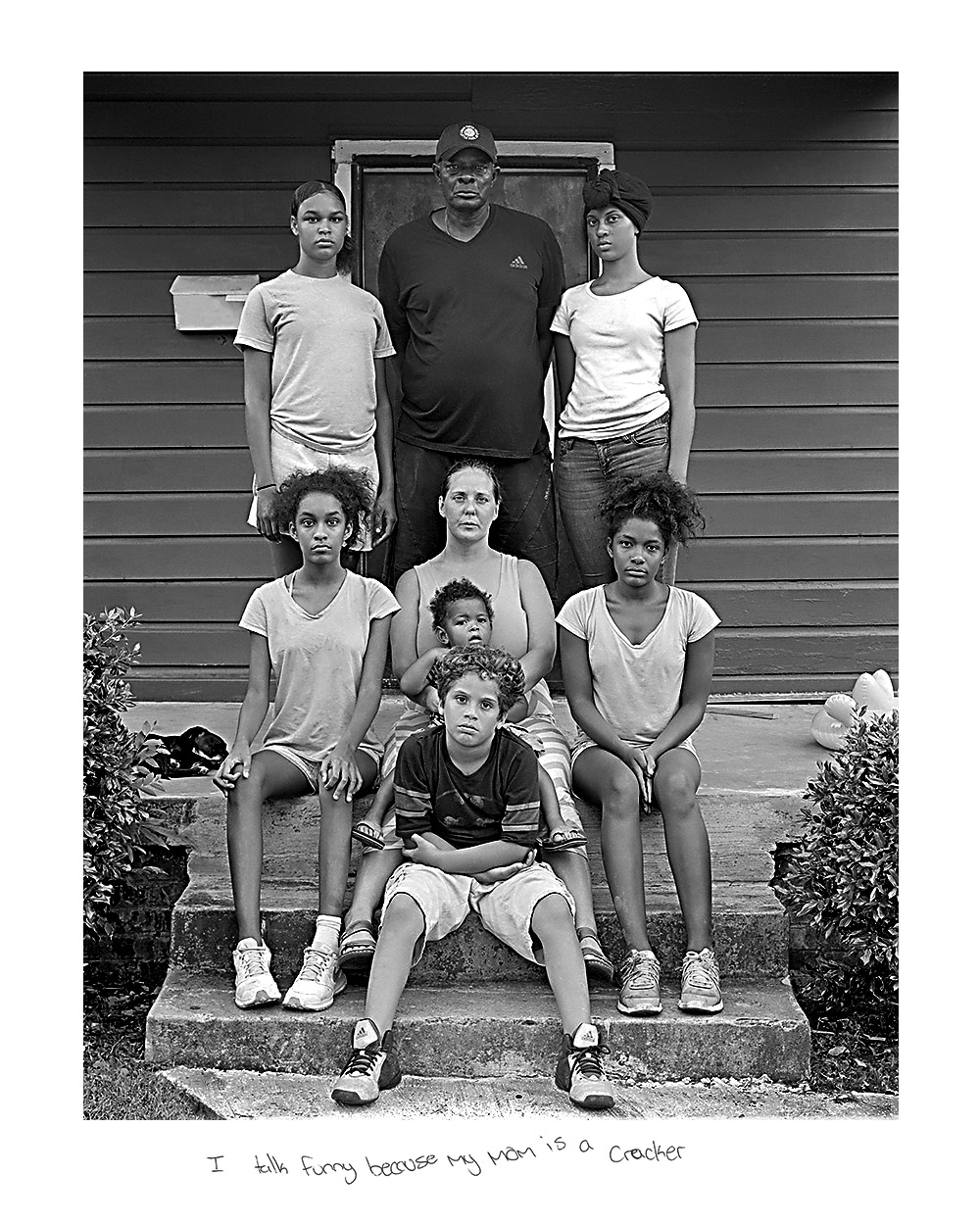
©Donna Pinckley, I talk funny because my mommy is a cracker
What revelations have you had making this work?
My project went viral after I entered Critical Mass in 2015 and David Rosenberg of slate.com wrote a story about it. I realized then it wasn’t a stereotypical view of the South that addresses racism, it was of a larger scale, even world-wide. I began receiving emails from all over the United States and across the world from people sharing their stories and wanting me to photograph them to be part of this project. These stories were so heartfelt it made me realize I wanted to pursue the work on a larger scale; travel and meet up with couples and families that reached out to me.
Another discovery was that many of the interracial couples and bi-racial families were young! I understood that older couples would be more likely to have had hateful comments made to them but some of my subjects were only seventeen! Makes me wonder how far racism has not come.
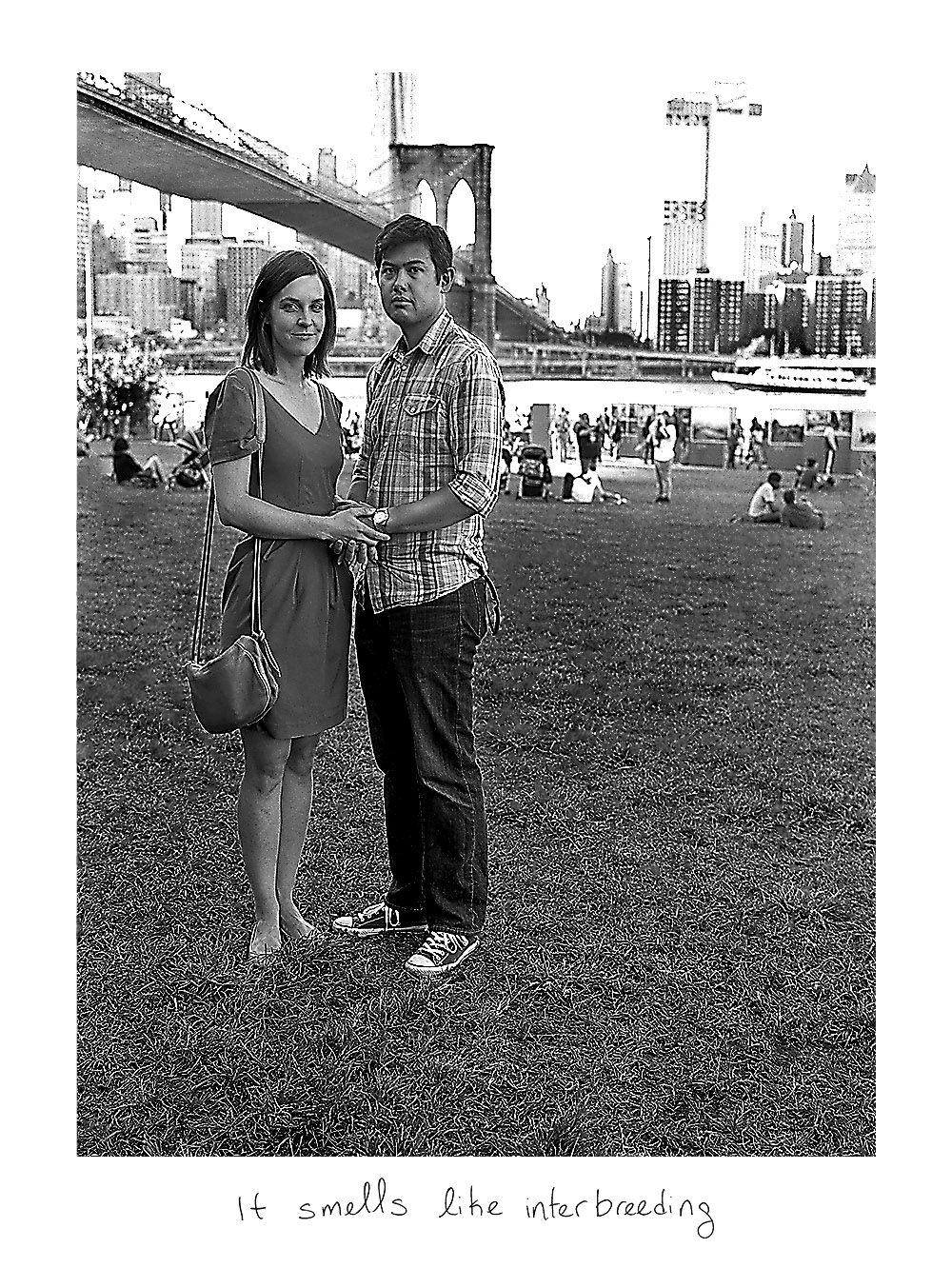
©Donna Pinckley, It smells like interbreeding
Are you still shooting film? Give us an idea of your tools and practice.
Yes, always! I use a 4 x 5 camera and process my black and white film. My first choice would be in the darkroom making silver gelatin prints. But with Sticks and Stones, I had to use digital output because of the need to place the comments on the actual print. The images and the comments that are hand written by one of the partners, are then scanned into Adobe Photoshop. After doing some minor dodging and burning in post, my images are printed 14” x 18” I miss silver printing so much I have been researching making digital negatives to get back into my darkroom.
And finally, describe your perfect day.
I would be in New Orleans in early June, riding my bike in Audubon Park in the morning, spending time with my daughter, Austin in Uptown. Photographing during the twilight hours (6-8pm) and finally, I would be hanging out with my friends outside with the crickets making music in the background.
Posts on Lenscratch may not be reproduced without the permission of the Lenscratch staff and the photographer.
Recommended
-
Joli Livaudais: The States Project: ArkansasFebruary 24th, 2018
-
Kristen Spickard: The States Project: ArkansasFebruary 23rd, 2018
-
Maxine Payne: The States Project: ArkansasFebruary 22nd, 2018
-
Carey W. Roberson: The States Project: ArkansasFebruary 21st, 2018
-
Gary Cawood: The States Project: ArkansasFebruary 20th, 2018

